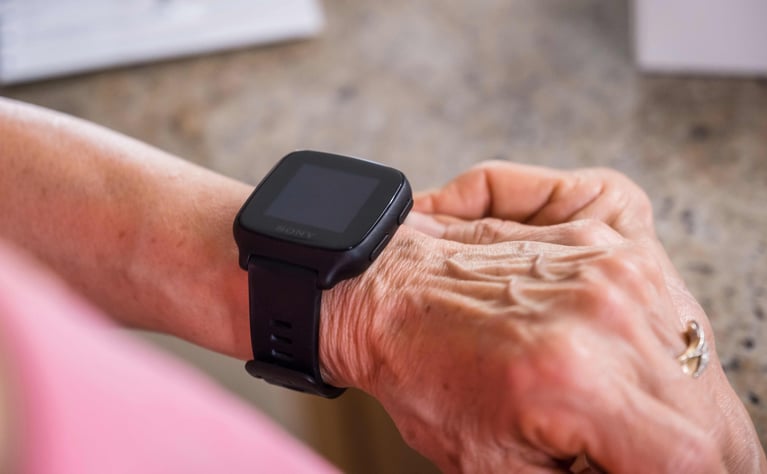How GPx is creating Bloodless Blood Tests on mSafety
The reinvention of bloodwork
Blood diagnostics provide a unique window into a patient’s overall health, particularly for patients with chronic conditions, like heart failure. But despite how essential bloodwork is, it is rarely done enough to accurately inform doctors about patient condition between clinic visits. Blood testing is time-consuming and expensive – for patients and care providers alike. Instead, for heart failure patients, care providers often resort to less predictive health metrics, like weight fluctuation.
"We decided we were going to put all the value of blood biomarkers into the simplicity of a watch.”
To date, no solution has fully addressed the need for accessible and accurate remote monitoring of heart failure patients. Implantable pressure sensors are one option, but with major flaws. Not only do very few patients qualify for the expensive implant, but even fewer patients are also willing to undergo the invasive operation.
The GPx journey begins when cofounders Javier Echenique, Sean Matsuoka and Sidhant Jena set themselves a goal. Javier explains: “We decided we were going to put all the value of blood biomarkers into the simplicity of a watch.” By applying the power of algorithms on digital biomarkers that correlate with blood biomarkers, they could deliver insights about the underlying blood diagnostics – without drawing a single drop of blood.
.

To develop their proprietary algorithms, GPx turned mSafety into the remote monitoring service they needed. They chose mSafety because it gives them full control of their data and full customisability of their wearable service, including its communication with external sensors. With this functionality, mSafety allowed GPx to optimise their service for simplicity and accessibility.
“First, with mSafety there is no need to pair a companion smartphone,” explains Sean Matsuoka, COO of GPx. “This removes unnecessary technical complexity. Second, the superior battery life makes life simpler for everyone. We’re easily getting a week of charge. The less often patients have to charge their wearable, the better.”
Perhaps the most important advantage of mSafety in terms of GPx’s accessibility was reliable data collection. “Strong cellular connections and effortless Bluetooth Low Energy pairing to external sensors means all our data arrives seamlessly,” says Sean. “This is critical of course, because no connection means no data.”
"We hear again and again from nurses how easy the system is to use. Onboarding patients is a breeze."
With mSafety, GPx can develop their Bloodless Blood Tests. They are refining their proprietary algorithms through clinical trials and aim to be FDA-approved by 2024. Their health-dedicated solution on mSafety – unlike leisure devices that mix medical data with personal data – creates no extra steps to protecting personal health information. This simplifies the FDA approval process.
In terms of operation, mSafety enables a wearable service for GPx that gives patients and care providers no trouble whatsoever – no matter the age or digital literacy of the patients. “We hear again and again from nurses how easy the system is to use. Onboarding patients is a breeze,” says Javier. “We have extremely high compliance thanks to mSafety.”
By fast-tracking their service on mSafety, GPx is on their way to delivering value to the entire world. Algorithmic blood tests are not only the easy and convenient option to blood monitoring, but it is also the most affordable. With GPx’s Bloodless Blood Tests, it will be easier than ever for communities around the world to access life-saving blood biomarker information.
Download the complete case story here.
Get in touch today and discover how your business can unlock an innovative remote monitoring service with mSafety.